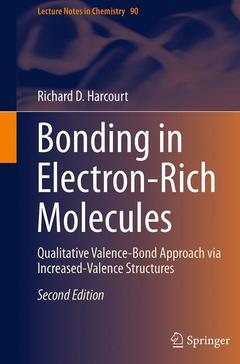Description
Bonding in Electron-Rich Molecules (2nd Ed., 2nd ed. 2016)
Qualitative Valence-Bond Approach via Increased-Valence Structures
Lecture Notes in Chemistry Series, Vol. 90
Language: English
Subjects for Bonding in Electron-Rich Molecules:
Publication date: 11-2015
Support: Print on demand
Publication date: 11-2015
Support: Print on demand
Description
/li>Contents
/li>Biography
/li>Comment
/li>
This second edition was updated to include some of the recent developments, such as ?increased-valence? structures for 3-electron-3-centre bonding, benzene, electron conduction and reaction mechanisms, spiral chain O4 polymers and recoupled-pair bonding. The author provides qualitative molecular orbital and valence-bond descriptions of the electronic structures for primarily electron-rich molecules, with strong emphasis given to the valence-bond approach that uses ?increased-valence? structures. He describes how ?long-bond? Lewis structures as well as standard Lewis structures are incorporated into ?increased-valence? structures for electron-rich molecules. ?Increased-valence? structures involve more electrons in bonding than do their component Lewis structures, and are used to provide interpretations for molecular electronic structure, bond properties and reactivities. Attention is also given to Pauling ?3-electron bonds?, which are usually diatomic components of ?increased-valence? structures for electron-rich molecules.
The University of Melbourne,
Victoria 3010
Australia. r.harcourt@unimelb.edu.au
New edition now covering increased-valence and 3-electron-3-centre bonding, recoupled-pair bonding, and spiral chain O4 polymers
Written by an expert
Provides a clear overview for advanced graduate and post-graduate students as well as researchers




